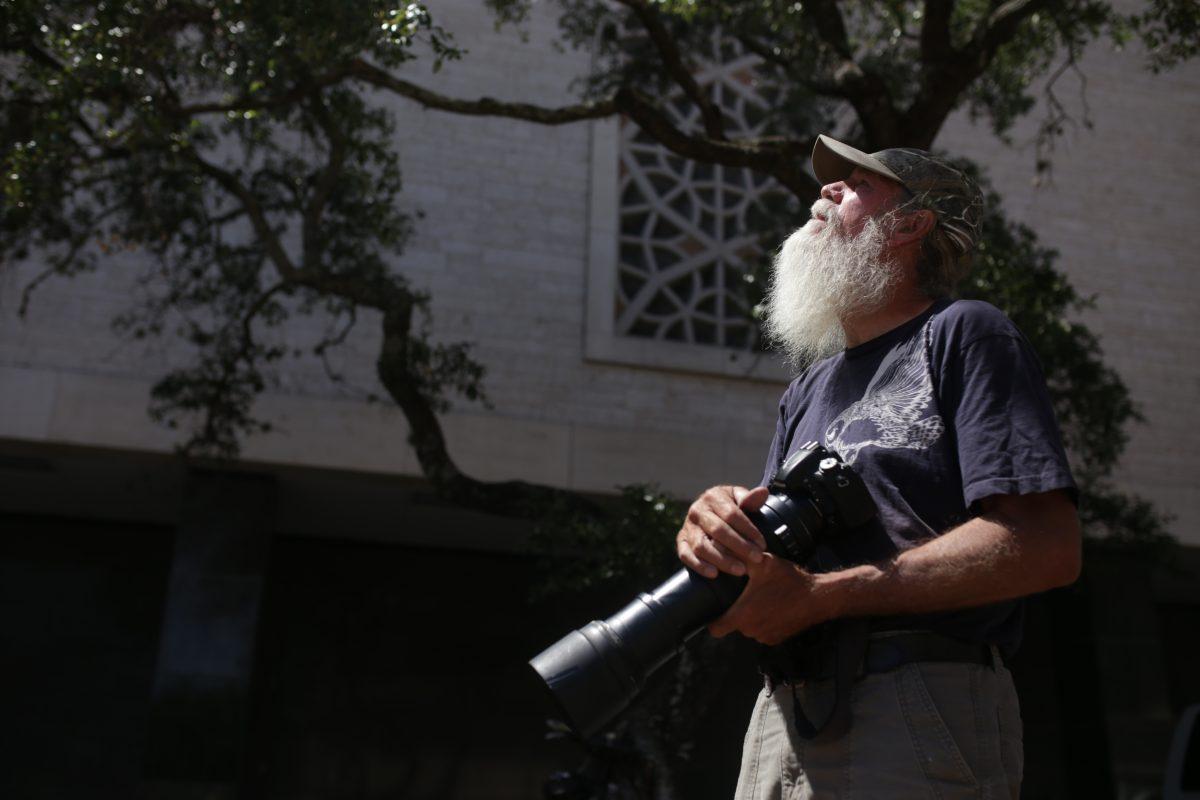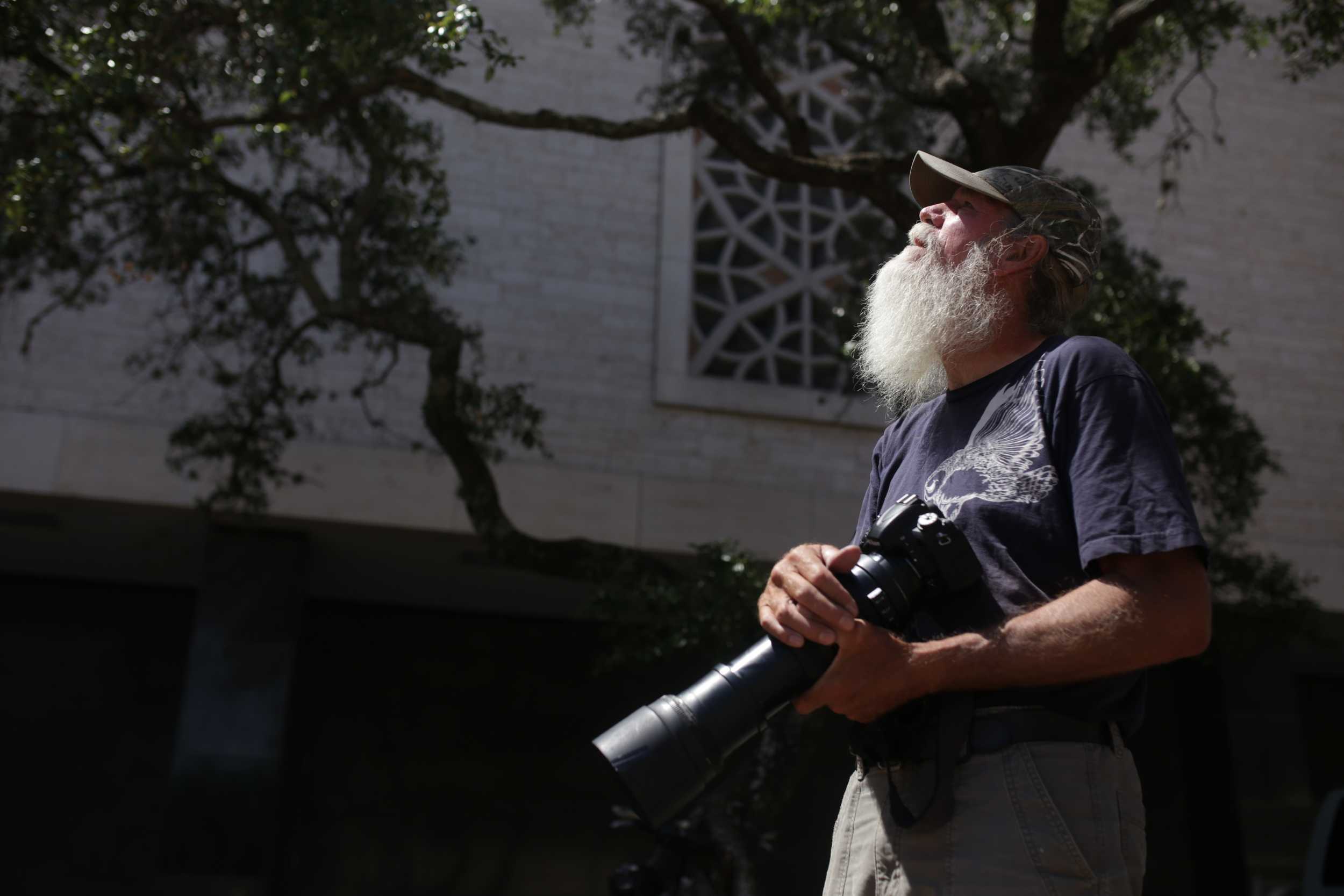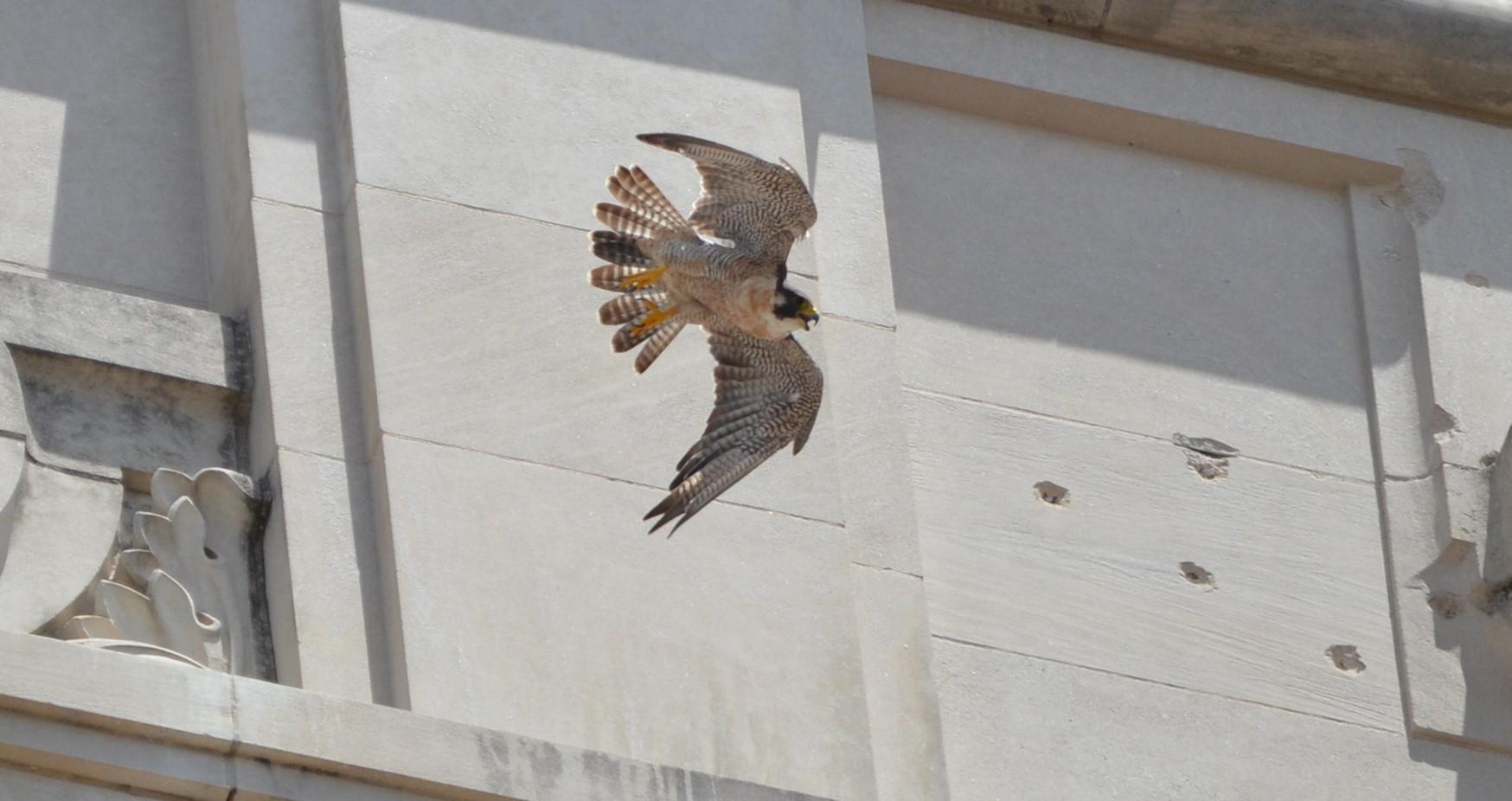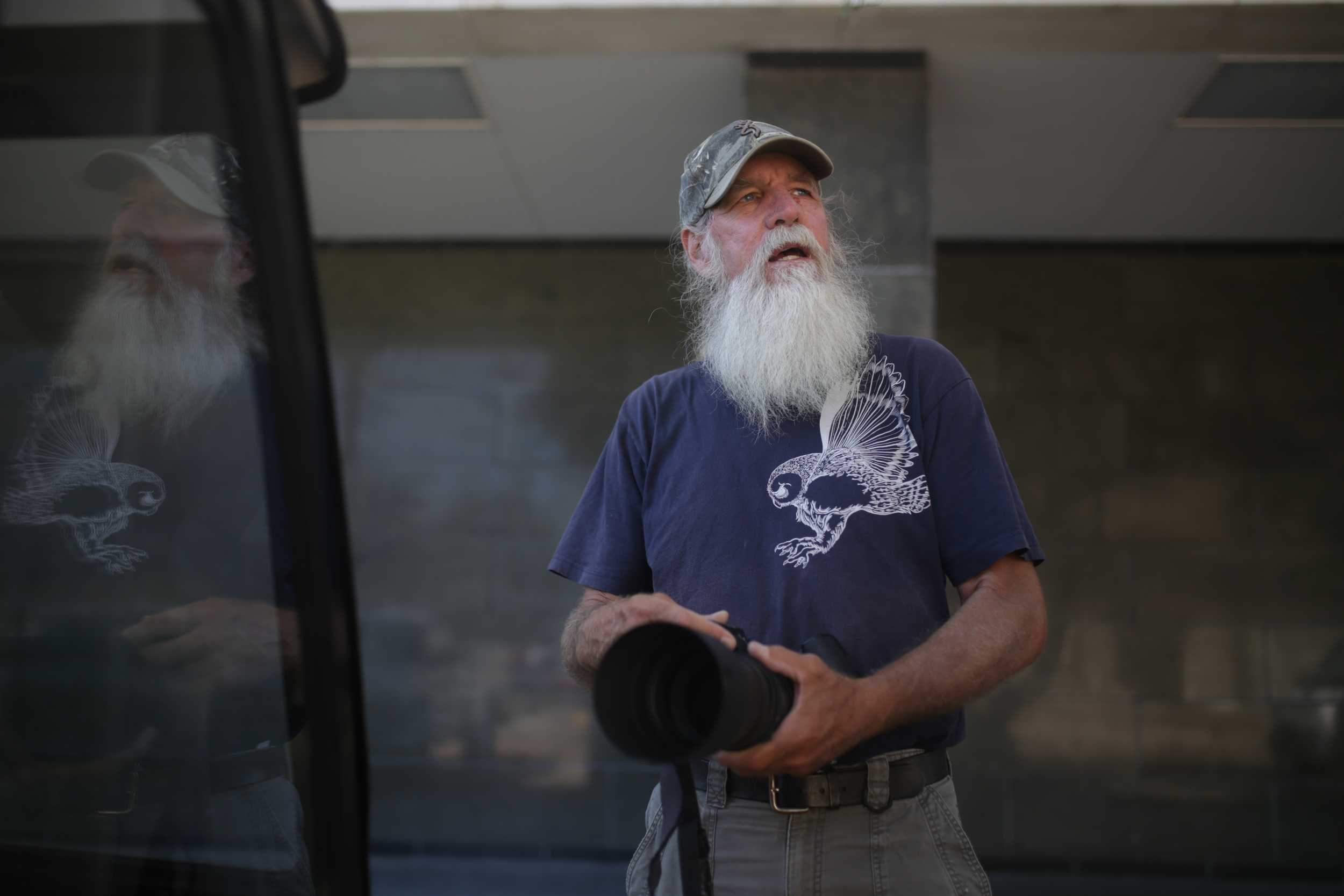Chris DuCharme waits at the base of the UT tower almost every day of the week for his next photo opportunity.
Story by Lauren L’Amie
Photos by Marshall Tidrick
Six days a week, Chris DuCharme bikes through Austin to the foot of the University of Texas tower, a camera bag slung around his shoulder. Wearing a baseball cap, cargo shorts and sporting a long white beard, his telephoto lens points upward toward the top of the tower, focusing intently on its subject: a female peregrine falcon.
While he draws suspicious glares around town, on campus he is often mistaken for a professor. His most frequently asked question when anyone approaches him is: how are the birds doing today? “I only miss about four or five days out of the year,” DuCharme says. “That’s part of the deal is you’ve got to be regular. It’s just what I do.”
A self-taught photographer, DuCharme drives to Austin from his home in Bastrop to check on several peregrine falcons and families of red-tailed hawks, starting in Guerrero Park in East Austin and making his way to the UT campus on his bike.
For the past six years, he has followed and documented the journey of the female peregrine – or Tower Girl, as he calls her – from his earliest documented sightings in downtown Austin to her current home on top of UT’s most iconic structure.
In the birding community, spotting a peregrine falcon in Austin is akin to winning the lottery – the city’s last documented resident peregrine, according to DuCharme, was in the early 20th century.
“This is a history-making bird,” DuCharme says. “They just don’t exist in Texas other than in the Trans-Pecos area. We don’t know why it’s here, but it is. It’s a long story of how we got here to UT, but it’s just about following birds and connecting the dots.”
Tower Girl, UT’s resident peregrine falcon, circles the top of the tower. Photo courtesy of Chris DuCharme.
After several years of tracking the Tower Girl, a representative of the Travis County Audubon Society put DuCharme touch with Bruce Calder, a fellow bird of prey enthusiast and UT alumnus, to spearhead awareness and conservation efforts.
Calder contacted former UT President Bill Powers directly, with what he prefaced as “a bizarre request” – to install a wooden nesting box on top of the tower to accommodate the rare falcon during the nesting season.“I gave myself a one percent chance,” Calder says. “This is the tower. It’s this shrine, this big monolith that has been there forever and it represents the university. So I fully understood that this wooden box might desecrate this shrine.”
Despite his doubts, the box was built and installed by a crew led by Neil Crump, UT’s Manager of Plant Construction in February of 2014.
The box was seemingly empty until March of this year, when Crump made a surprising discovery during a routine lighting repair on the tower. “I went over to the box and peeked inside and that’s when I saw the four eggs,” Crump says. “Strangely enough, after we came down we saw Chris and I told him about the eggs, and he was quite pleased that we had a real live falcon nest.”
According to Calder, this is the first time a peregrine has laid eggs in Austin that has been documented. Although the eggs won’t result in offspring this nesting season, Crump, DuCharme and Calder hope to raise funds to install a live webcam on top of the tower to monitor Tower Girl’s behavior and raise awareness.“There’s definitely been much more awareness about the bird now, so hopefully we can get some funding now for next nesting season,” Crump says. “[A camera] will help us tremendously with seeing what’s going on.”
Calder hopes that DuCharme’s photos, along with the discovery of the eggs, will pique a more active public interest.“It can be a very esoteric thing because people may not know a peregrine from a pigeon,” Calder says. “But to us bird guys it’s a very big deal.”
Along with photographing Tower Girl on a daily basis, DuCharme hopes to aid in conservation efforts on campus and across the state.
Since Crump recovered some of the eggs in May, DuCharme and Calder have begun making arrangements for Texas A&M to take custody of the egg fragments as biological specimens, hopefully leading to further research opportunities.
For DuCharme, documenting Tower Girl has never been about notoriety – it’s about being an advocate for the birds. “There are moments like this where it all comes together,” DuCharme said. “I feel so fortunate to be able to ride my bike and do this. It’s about getting a following and bringing awareness to the birds. If that’s all you can do, do it.”















































Jim • Jun 6, 2016 at 5:13 pm
Nicely written article about a rare and amazing bird, and those who care about it. It would be super to see more of Mr. DeCharme’s bird photos.